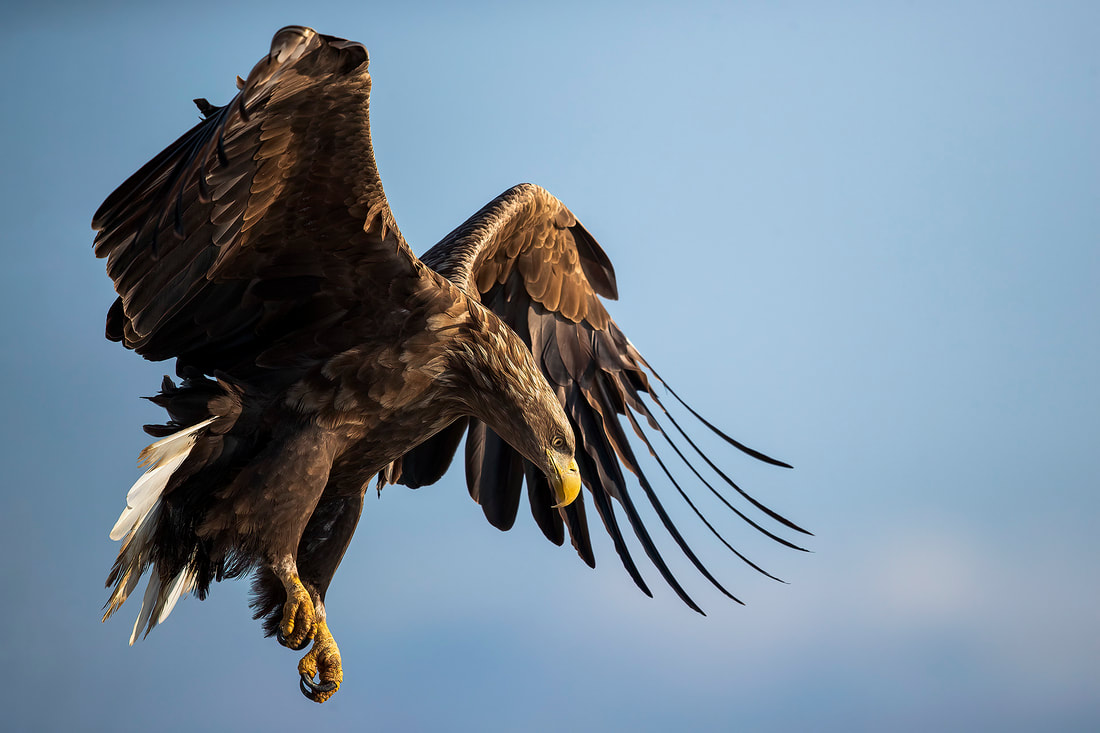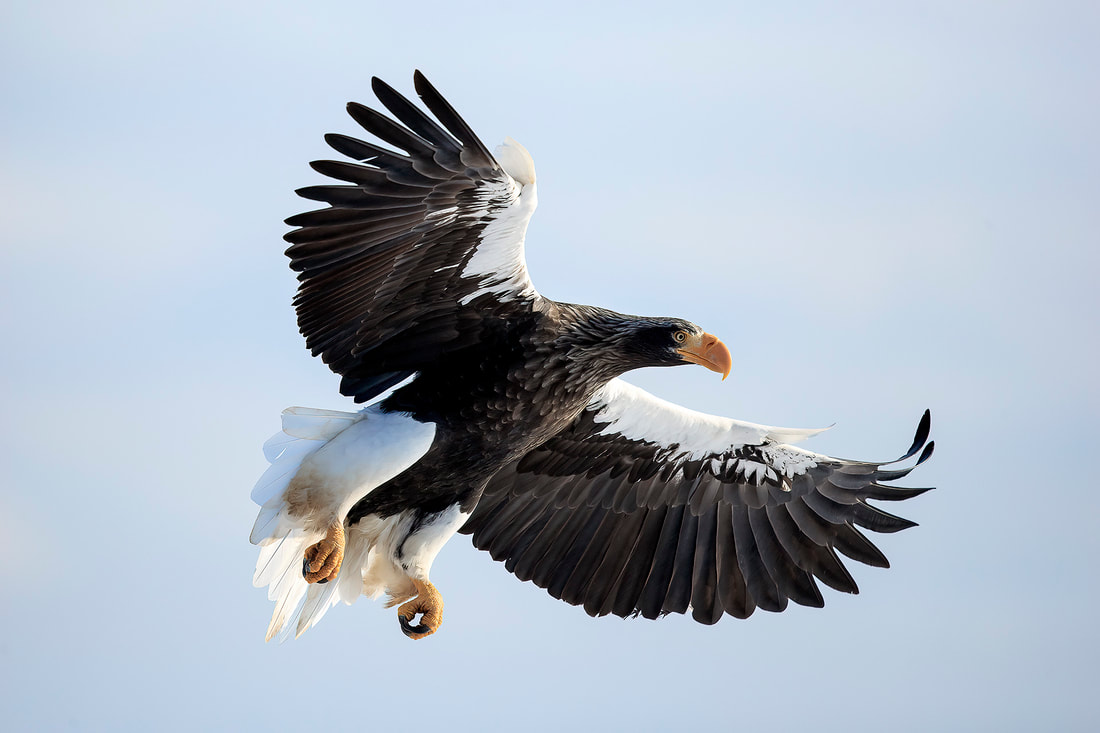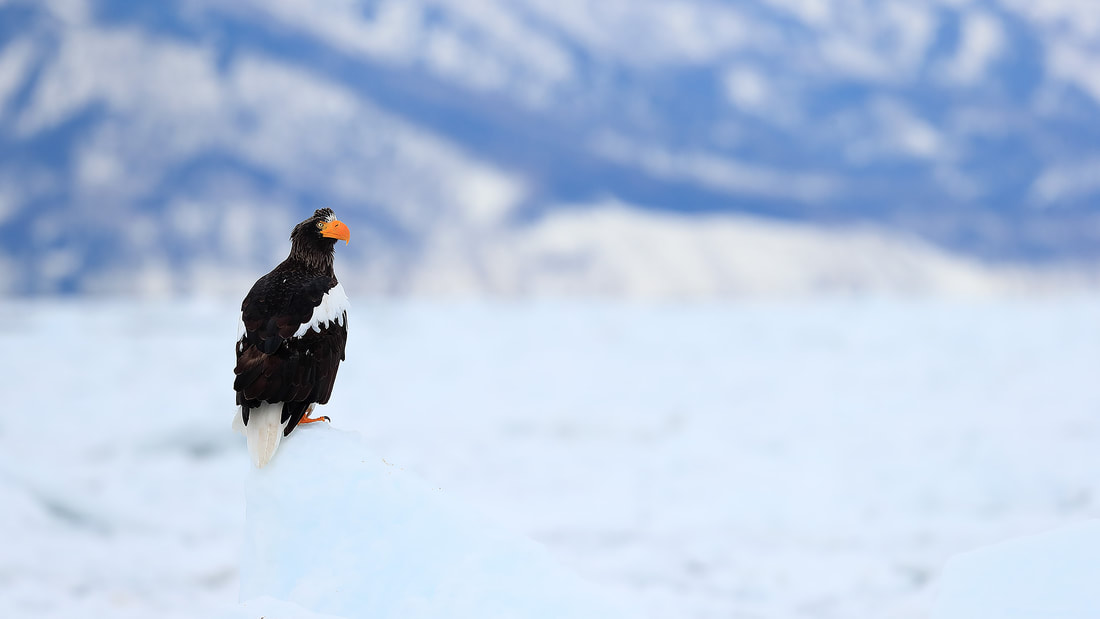|
It was a real pleasure to head back to Japan once again and lead another trip for Wildlife Worldwide alongside good friend and fellow photographer Sean Weekly. We took a group of excited photographers, among the first tourists to visit since Covid, on an adventure heading up to the island of Hokkaido for a week of world-class photography. Our first port of call was Lake Kussharo and whooper swans which can be found along the hot spring-fed shoreline. With only a short visit before the light faded away, our opportunities were limited. There would be another chance tomorrow. First thing the following morning we headed down to Otowa Bridge before dawn to hopefully capture the magic of the sunrise of the Setsuri River. What we witnessed was utterly breathtaking. It's so unusual for wildlife, weather and light to all come together perfectly - this really was one of those incredibly rare occasions. As you can see, the scene that lay before us was exceptional and the photography was relatively straight forward. We just had to wait for the mist to clear sporadically and for the cranes (and deer) to move into place. After such a fabulous start to the day, our next couple of stops seemed to be a bonus, rather than the main act. The bright sunlight made it more challenging for photography, but as the day progressed a light layer of cloud started to form once again. After an action-packed first full day on the island of Hokkaido, we headed back to Lake Kussharo for another session with the whooper swans. Having enjoyed an excellent couple of days in land, it was time to head to the coastal town of Rausu up in the north-east where we hoped to photograph Steller's sea and white-tailed eagles. We could not have expected what other delight was in store for us. Our first afternoon heading out on the water delivered some excellent encounters with the eagles. Unfortunately no ice was in the channel, but instead we were offered the unique chance to enjoy a pod of over 30 orca. Seeing these whales in summer is a regular occurrence, but in winter it only happens once in a blue moon. The next day, unfortunately was a non-starter as we had a blizzard blow in and we were unable to get out on the water at all. We did have another day though to try our luck again. We purposefully schedule and extra day here for such eventualities. After the storm cleared, we were indeed able to head back out on the boat and spend another session making the most of the eagle action. Our final target in Hokkaido, having so far been unlucky with potential sightings, was the Blakiston's fish owl. This time the group struck gold and we enjoyed excellent views of the world's largest species of owl. With a wonderful week spent enjoying the delights of Hokkaido, it was time to head back down to Tokyo (on the main island of Honshu). Here we were able to spend an evening exploring the city before we headed into the mountains and the city of Nagano. Nagano is famous for its winter sports, but we were here for a local species which are beyond celebrities. Our target species here was the Japanese macaque, or the snow monkeys as they are more affectionately known. The spend much of their time around a series of hot pools, escaping the bitterly cold weather of these rugged mountains. As you can see, we had an exceptional couple of weeks in Japan photographing the country's magical wildlife. In 2024 both of the Wildlife Worldwide trips will be led by Sean, but I can assure you that if you book you'll be in great hands.
0 Comments
I remember seeing the first images of Japan in winter around 10 years ago, but I had no knowledge of the country and very little idea about the wildlife. However, at the start of 2019 I was asked whether I would like to lead Wildlife Worldwide’s inaugural photography tour to the country, during the snowy winter months, focusing on red-crowned cranes, Steller’s sea eagles and of course the much-loved Japanese macaques (or snow monkeys). Firstly, if you decide to visit Japan, I can’t recommend Japan Airlines enough - they were truly exceptional. The majority of Japan’s wildlife is concentrated along the main island’s central spine or on some of the smaller, wilder islands such as Hokkaido. This is where my group spent the majority of their time, on the beautiful snowy island of Hokkaido. We had wonderful sightings of whooper swan and red-crowned cranes during the first couple of days on the island. We had the chance to see a pair of Ural owls in the nearby forests and numerous woodland birds (many of which are recognisable to those from Europe). For me though, the species I was most looking forwards to seeing was the impressive Steller’s sea eagle. Let’s just say I wasn’t going to be disappointed … We didn't have the best light for our time in Japan, particularly with the cranes - it was either too gloomy or too bright. Fussy photographers are a pain, but it does make such a big difference. It was really gloomy for my time with the swans, so I didn't really get anything worthwhile, but it was lovely just to watch them. After our time in the island's volcanic interior, it was time to head to the coast in search of Steller's and white-tailed eagle. After heading out in to the see ice to photograph the eagles, we headed south towards a frozen lake for more eagle photography. There was also an opportunity to enjoy the glorious birdlife around a traditional onsen. The highlights here were the Japanese pygmy woodpecker, the Japanese sable (a member of the marten family) and the Blakiston's fish owl (the largest owl in the world). After an amazing week on the island of Hokkaido, enjoying the snowy conditions and stunning wildlife, it was time to head back to Tokyo. We spent a night in Tokyo before heading into the main island's centre to the city of Nagano. To be more precise we headed to the town of Yamanouchi, the perfect place to base ourselves for photographing the famed 'snow monkeys' or as they should be known, Japanese macaques. Sadly, there was a bit of a heat wave in the mountains and snow was rather lacking for the most part. So what can I say about Japan. Well, quite simply, it is fantastic. Don't expect to be on your own, there will nearly always be other people about, but it is still somewhere I recommend highly. For the opportunities to see Steller's sea eagles alone it is worth it. Be sure to join on Wildlife Worldwide's Japan's Winter Wildlife photography tour.
|
AuthorBret Charman Archives
July 2024
Categories
All
|















































